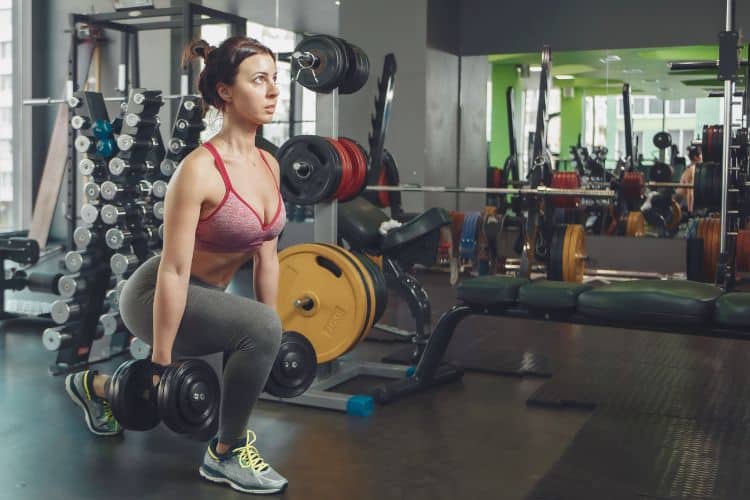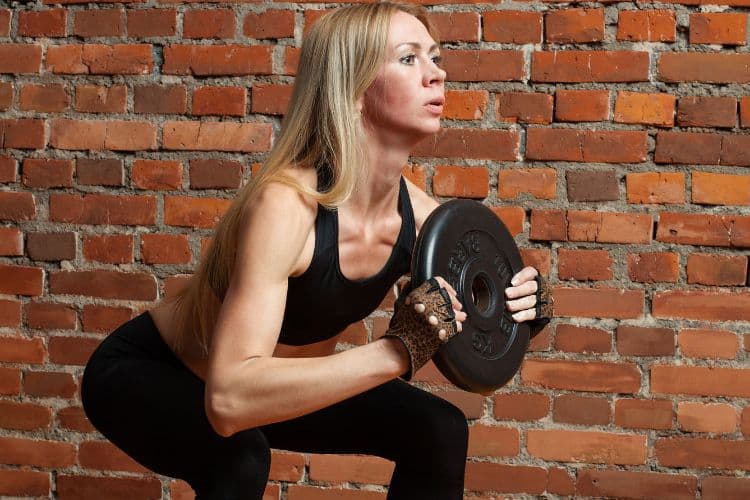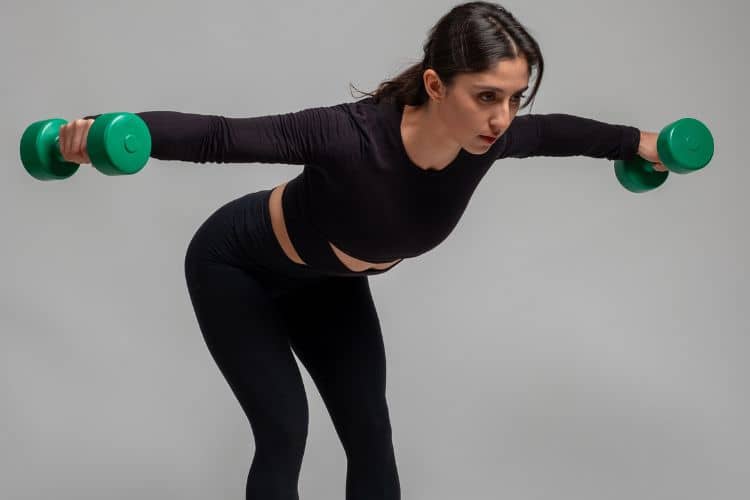Sign up for workout ideas, training advice, reviews of the latest gear and more.






Looking to sculpt your chest, shoulders, back, and arms—all in just 35 minutes? A 35-minute upper body dumbbell strength training routine can deliver impressive results when done consistently and correctly. Whether you’re working out at home or at the gym, this efficient upper body workout targets all major muscle groups using just a pair of dumbbells.
In this blog post, we’ll walk you through a structured and balanced upper body dumbbell workout, provide tips to maximize results, and discuss the benefits of strength training for your upper body. Let’s dive in and get stronger—one rep at a time.
Dumbbell workouts mimic natural movement patterns, making them great for building functional upper body strength that translates into everyday tasks like lifting, pushing, and pulling.
Unlike barbells, dumbbells require each side of your body to work independently, helping correct muscle imbalances between your dominant and non-dominant sides.
Whether you’re a beginner or advanced lifter, dumbbells provide adjustable resistance and a wide range of movement, allowing you to customize your upper body workout easily at home or the gym.
Warming up before lifting weights is critical to reduce injury risk and increase performance. Spend at least 5 minutes warming up the upper body:
This workout includes 3 circuits, each consisting of 4 exercises. Perform each move for 45 seconds, followed by 15 seconds rest. After completing a circuit, rest for 1 minute, then move to the next.
Muscles worked: Chest, shoulders, triceps
Lie on a flat bench or the floor. Hold dumbbells above your chest with palms facing forward. Lower them slowly until elbows are at 90 degrees, then press back up.
Muscles worked: Chest, shoulders
With arms extended, bring the dumbbells together above your chest. Slowly lower the weights out to the sides (slight bend in elbows), then squeeze the chest to return to the starting position.
Muscles worked: Triceps
Hold one dumbbell with both hands. Extend it overhead, then slowly bend the elbows to lower behind your head. Extend fully.
Muscles worked: Triceps, chest
Lie back and hold two dumbbells together over your chest. Keep elbows close to your body as you press up.
Rest 1 minute.
Muscles worked: Lats, rhomboids, biceps
Hinge at the hips, keep your back flat, and pull dumbbells to your sides. Squeeze the shoulder blades at the top.
Muscles worked: Back, core, biceps
Place one hand on a bench for support, row with the opposite hand, then switch.
Muscles worked: Biceps
Stand tall and curl both dumbbells toward your shoulders. Lower with control.
Muscles worked: Biceps, forearms
Hold the dumbbells with palms facing in (neutral grip) and curl.
Rest 1 minute.
Muscles worked: Deltoids, triceps
Press both dumbbells overhead from shoulder height and return slowly.
Muscles worked: Lateral delts
With a slight bend in your arms, raise the dumbbells to shoulder level, then lower.
Muscles worked: Front delts
Lift dumbbells in front of your body up to eye level, keeping palms down.
Muscles worked: Obliques, core
Sit on the floor, holding one dumbbell. Twist side to side, touching the floor with the weight.
Rest 1 minute.
Never skip your cool-down—it helps reduce soreness and improve flexibility. Spend 5 minutes with these stretches:
Hold each stretch for 20–30 seconds and breathe deeply.
To get the best results from this upper body dumbbell strength routine, follow this weekly split:
Even in just 35 minutes, dumbbells provide enough resistance and variety to stimulate hypertrophy, especially when training to near-failure with proper form.
Focusing on compound movements (presses, rows) and isolation (curls, extensions) builds both maximum strength and muscular endurance over time.
Strengthening your upper back and shoulders helps counteract poor posture from sitting all day, and promotes healthy shoulder mobility.
Strength training increases lean muscle mass, which elevates your resting metabolic rate, helping you burn more calories even when at rest.
Quality over quantity—maintain a slow and controlled tempo to avoid injury and better activate muscles.
Use a weight that challenges you for the last few reps but doesn’t compromise your form.
Increase weight, reps, or time-under-tension every 1–2 weeks to avoid plateaus and keep building strength.
Muscle building and definition come from regular, consistent effort, not occasional workouts.
Aim for 2–3 times per week, giving at least 48 hours of rest between sessions to allow muscle recovery and growth.
Yes! Beginners can start with lighter weights and reduce each exercise duration to 30 seconds until they build endurance.
A moderate pair of dumbbells (10–20 lbs for beginners, 20–35 lbs for intermediate) is ideal. Adjust based on how challenging each move feels.
Absolutely. This routine is designed for both home and gym workouts with minimal equipment.
While spot-reduction isn’t possible, this strength workout builds lean muscle, which supports fat loss across the body, including the arms.
The 35-minute upper body dumbbell strength training routine is a fast, effective way to target your chest, shoulders, arms, and back using minimal equipment. Whether you’re training at home or hitting the gym, this upper body workout delivers results in less time.
Stick with this plan, pair it with proper nutrition and rest, and you’ll start seeing stronger, more defined muscles—and improved overall performance—in just a few weeks.
Consistency, proper form, and progressive overload are your keys to success. So grab those dumbbells and make every rep count!
Want more workout and video guide?
Follow us on Pinterest, Facebook, and Subscribe to our Newsletter and Stay tuned for FREE downloads of our App coming soon!
Stay up to date on the latest women’s health, fitness and lifestyle trends and tips.